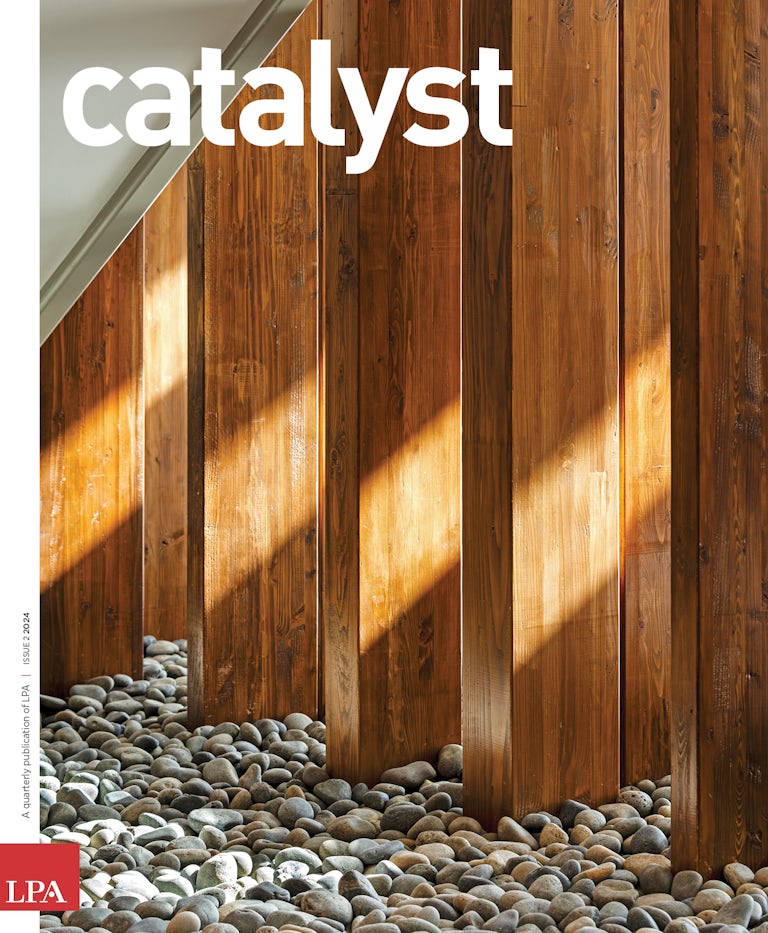The Challenge:
When Santa Ana Unified School District merged an elementary and middle school last year, the combined Lydia Romero-Cruz Academy kept the elementary school’s name and the aging middle school’s campus. The 50-year-old facility is backed into a corner of a busy intersection, surrounded by two major roads and a staff parking lot. The only outdoor areas on the constrained site were the odds and ends that stood between the building and the roadways, triangles of asphalt and concrete without any obvious use.
The Solution:
On a tight budget, LPA landscape architects worked with the integrated team to stitch together left-over spaces into functional environments fit for 21st-century learning.
An abandoned entry was revived as a gateway to the outdoor spaces. A dated orange-tile feature wall was re-imagined as a climbing surface, with signage celebrating the school’s namesake, a pioneer in bilingual education. Existing unutilized concrete and asphalt pavement areas were transformed, and graphics were added to facilitate learning and cooperative play, such as a court for “Fraction Ball.” Kindergarten classrooms were located to the front of the school to maximize visibility for the new Kinder Playground, signaling the campus transformation to the public. New playground equipment was chosen to engage the young students, and splashes of color were added to a drab concrete walkway, enhancing space for activities.
Around the campus, designers worked to soften the rough, utilitarian nature of the back-of-house spaces. Planters were added to shield students from power transformers and a trash collection area. A concrete block wall was relocated to the property line to maximize the play area and protect students from the busy street.
The end result provides a variety of outdoor learning environments for the redesigned campus, expanding the usable space and creating healthier, more engaging play areas for students of different ages.
“It’s a dramatic transformation,” says Landscape Project Designer Lance Hunter, “but it looks like it was always meant to be this way.”
















